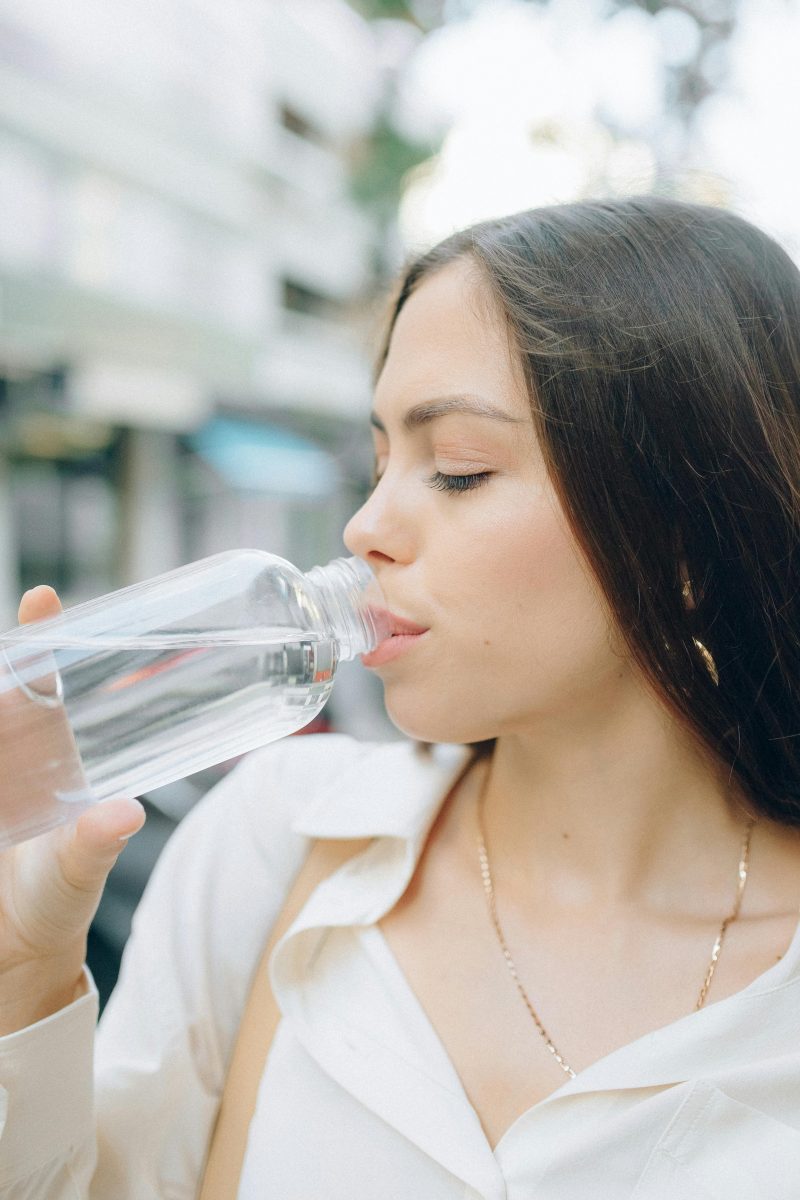
Can You Drink Tap Water in Australia?
Australia’s tap water is generally safe to drink, but understanding the country’s water system and the safety standards in place is important. It is necessary to know about the process of water treatment, the role of the Australian government in water quality control, and regional differences in tap water quality. Additionally, comparing bottled water versus tap water and addressing common concerns and misconceptions will shed light on the topic.
Understanding Australia’s Water System
The process of water treatment in Australia plays a crucial role in ensuring the safety of tap water. Firstly, it involves multiple steps to remove impurities and make it safe for consumption. These steps typically include coagulation, sedimentation, filtration, and disinfection. Australia’s water treatment plants carefully follow these processes to maintain high-quality water standards.
Furthermore, the Australian government is actively involved in water quality control. It sets specific regulations and guidelines for water treatment plants to follow, ensuring compliance with safety standards. This includes regular monitoring and testing of tap water to detect any contaminants that may pose a risk to public health.
Australia’s vast and diverse landscape also poses unique challenges to its water management system. With varying climates and water sources across different regions, the country employs a range of water treatment technologies to cater to specific needs. From desalination plants in coastal areas facing water scarcity to advanced filtration systems in urban centers, Australia adopts a tailored approach to ensure water security for its population.
Moreover, the conservation of water resources is a key focus for Australia, given its history of droughts and water shortages. In addition to traditional treatment methods, the country invests in research and innovation to explore sustainable practices like water recycling and rainwater harvesting. These initiatives not only contribute to water conservation but also support environmental sustainability in the face of changing climate patterns.
Safety Standards for Drinking Water in Australia
In Australia, tap water undergoes thorough testing and monitoring to ensure its safety. Drinking water is regulated under the Australian Drinking Water Guidelines, which provide a framework for assessing water quality. These guidelines cover chemical and biological contaminants that could potentially be present in tap water.
Australia’s commitment to water safety extends beyond the guidelines to encompass a holistic approach to water management. This includes sustainable water sourcing practices, efficient treatment processes, and community engagement initiatives to raise awareness about the importance of clean drinking water.
Chemical and Biological Contaminants in Water
Tap water in Australia is rigorously tested for various chemical contaminants such as pesticides, heavy metals, and toxins. Additionally, measures are in place to monitor and control biological contaminants like bacteria, viruses, and parasites. These comprehensive testing processes aim to ensure that tap water meets the necessary safety standards before it reaches our homes.
Furthermore, Australian water authorities collaborate with research institutions and industry experts to stay abreast of emerging contaminants and technological advancements in water treatment. This proactive approach ensures that Australia’s drinking water remains safe and of high quality in the face of evolving environmental challenges.
Regular Monitoring and Testing of Tap Water
To maintain water safety, Australian water authorities conduct regular monitoring and testing of tap water. Samples are taken from various points in the distribution system, including treatment plants, reservoirs, and households. This consistent monitoring allows for early detection of any issues and prompt corrective actions if required.
Moreover, the data collected from these monitoring efforts is analyzed to identify trends and patterns in water quality, enabling authorities to implement targeted interventions and improvements in the water supply infrastructure. By leveraging data-driven insights, Australia continues to uphold its reputation for having one of the safest drinking water systems in the world.
Regional Differences in Tap Water Quality
It’s essential to acknowledge that tap water quality can vary across different regions in Australia. Factors such as urban versus rural areas and geological differences contribute to these variations.
Additionally, climate can play a significant role in tap water quality. Regions with higher temperatures may experience higher levels of evaporation, leading to increased concentrations of minerals and contaminants in the water supply. Conversely, areas with heavy rainfall may face challenges with water runoff and contamination from agricultural activities.
Urban vs Rural Water Quality
In general, tap water quality in urban areas tends to be higher due to more advanced infrastructure and stringent regulations. Urban areas benefit from large-scale water treatment plants that employ advanced filtration and disinfection processes. On the other hand, rural areas may face additional challenges due to limited resources and infrastructure.
Moreover, population density can impact water quality in urban areas. Higher population densities can lead to increased water consumption, putting a strain on water treatment facilities and potentially compromising the quality of tap water. In contrast, rural areas with lower population densities may have less demand for water treatment, but they could be more susceptible to contamination from agricultural runoff or septic systems.
State-by-State Analysis of Water Safety
When considering tap water safety, it’s helpful to examine specific states and territories within Australia. Each jurisdiction has its own water authority responsible for monitoring and maintaining water quality. By analyzing state-by-state data, residents can have a clearer understanding of the water safety standards in their respective areas.
Furthermore, geological factors such as the presence of natural minerals or contaminants in the soil can influence tap water quality. Some regions may have higher levels of naturally occurring substances like arsenic or fluoride, which can affect the taste and safety of the water. Understanding these geological variations is crucial for ensuring that appropriate treatment measures are in place to provide safe drinking water to residents.
Bottled Water vs Tap Water in Australia
The debate between bottled water and tap water is a topic of interest. Considering factors like environmental impact and cost can assist in making an informed decision.
When it comes to the environmental impact of bottled water, the statistics are staggering. In Australia alone, it is estimated that over 370 million plastic water bottles end up in landfills each year. These bottles can take up to 1,000 years to decompose, releasing harmful toxins into the environment in the process. Additionally, the production and transportation of bottled water contribute to carbon emissions, further exacerbating climate change. Opting for tap water not only helps to reduce plastic waste but also plays a crucial role in lowering carbon footprints and promoting sustainability.
Environmental Impact of Bottled Water
Bottled water consumption contributes to plastic waste, carbon emissions from production, and transportation. Opting for tap water helps to reduce the environmental footprint associated with the production and disposal of plastic bottles.
On the other hand, let’s delve deeper into the cost comparison between bottled water and tap water. While the convenience of grabbing a bottle of water on the go may seem appealing, the financial implications can be significant. In Australia, a single bottle of water can cost anywhere from $2 to $4, depending on the brand and size. For daily consumption, this cost can quickly add up, especially for households with multiple members. In contrast, tap water is virtually free, with the average cost per liter being less than a cent. By choosing tap water over bottled water, individuals not only make an eco-friendly choice but also save a substantial amount of money in the long run.
Cost Comparison: Bottled Water vs Tap Water
Tap water is significantly more cost-effective compared to buying bottled water. The cost of bottled water can quickly add up, whereas tap water is a readily available and affordable option. By choosing tap water, individuals can save money while still maintaining the same level of hydration.
Common Concerns and Misconceptions about Australian Tap Water
Addressing common concerns and misconceptions can alleviate any doubts about tap water safety in Australia.
When it comes to tap water in Australia, one common concern revolves around the taste and smell of the water. Some individuals may find that tap water has an unusual taste or smell. These sensory perceptions can be attributed to naturally occurring minerals or chemicals used in the water treatment process, such as chlorine. However, it’s important to note that any taste or smell does not necessarily indicate a health risk. The presence of these elements is actually a sign that the water is being treated and monitored to ensure its safety. Nevertheless, for those who are sensitive to these tastes and smells, using water filters or refrigerating tap water can help enhance its taste and make it more palatable.
Taste and Smell of Tap Water
Some individuals may find that tap water has an unusual taste or smell. These sensory perceptions can be attributed to naturally occurring minerals or chemicals used in the water treatment process, such as chlorine. However, it’s important to note that any taste or smell does not necessarily indicate a health risk. Nevertheless, using water filters or refrigerating tap water can help enhance its taste.
Another common concern among Australians is the presence of fluoride and chlorine in tap water. Fluoride is commonly added to tap water in Australia to improve dental health. This practice is supported by extensive research and has been proven to be safe and effective in preventing tooth decay. Similarly, chlorine is used as a disinfectant in the water treatment process and may also be present in tap water. While some people may have concerns about chlorine, it is essential in controlling and preventing waterborne diseases, ensuring that the water remains safe for consumption.
Fluoride and Chlorine in Tap Water
Fluoride is commonly added to tap water in Australia to improve dental health. This practice is supported by extensive research and has been proven to be safe and effective. Chlorine, used as a disinfectant, may also be present. While some people may have concerns about chlorine, it is essential in controlling and preventing waterborne diseases.
In conclusion, tap water in Australia is generally safe to drink. The stringent water treatment processes, regular testing, and adherence to safety standards ensure that tap water meets quality requirements. By understanding the water system, safety standards, regional differences, and addressing common concerns, individuals can confidently make the choice to drink tap water in Australia.







